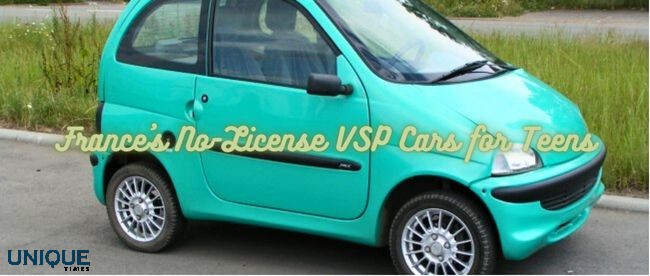Revolutionizing Transportation: No License Required for VSP Cars in France

Imagine a world where anyone over the age of 14 can hop into a vehicle and drive without the need for a traditional driver’s license. In France, this concept isn’t just a daydream; it’s a reality for those who choose to operate Voiture Sans Permis (VSP) cars. In this blog, we’ll delve into the fascinating realm of VSP cars, exploring how they work and the implications of this unique approach to personal transportation.
Voiture Sans Permis (VSP) Cars: The Basics
Before we dive into the surprising lack of a license requirement, let’s understand what VSP cars are:
- Compact and Lightweight: VSP cars are small, lightweight vehicles designed for urban commuting and short trips. They are often two-seaters and resemble miniature cars, making them perfect for navigating crowded city streets.
- Limited Speed: One of the key features of VSP cars is their limited speed capability. These vehicles typically have a maximum speed of 45 kilometers per hour (about 28 miles per hour), ensuring they remain in the lower-speed category for road regulations.
- Engine Types: VSP cars come equipped with small, low-powered engines, such as 50cc two-stroke or four-stroke engines, electric motors, or hybrids. Their engines are designed for efficiency rather than high performance.
No License, No Problem
Now, let’s explore the unique aspect of VSP cars in France: the absence of a driver’s license requirement for certain age groups.
- Minimum Age: To operate a VSP car in France, you must be at least 14 years old. This significantly lowers the entry barrier for young individuals who are not yet eligible for a traditional driver’s license.
- Safety Measures: While no formal driver’s license is necessary, there are safety regulations in place. Drivers of VSP cars must pass a theoretical test on the rules of the road and undergo practical training to ensure they can operate these vehicles safely.
- Environmental Benefits: VSP cars are often electric or use low-displacement engines, making them environmentally friendly options for short-distance travel. This aligns with France’s commitment to reducing carbon emissions.
Implications and Considerations
The concept of allowing individuals as young as 14 to drive VSP cars without a traditional license raises several considerations:
- Increased Mobility: VSP cars provide an opportunity for increased mobility, particularly for young people living in rural areas with limited public transportation options.
- Safety Concerns: While safety measures are in place, the idea of young teenagers driving cars on public roads can raise concerns. It’s crucial that strict safety regulations are enforced.
- Environmental Impact: Promoting eco-friendly transportation options like VSP cars aligns with global efforts to reduce emissions and combat climate change.
- Alternative to Traditional Licensing: VSP cars offer an alternative to traditional driving, potentially reducing the pressure on teenagers to obtain a full driver’s license at an early age.
In conclusion, the introduction of VSP cars in France, with no license requirement for those over 14, is a bold move that challenges conventional notions of driving. It offers increased mobility, environmental benefits, and an alternative to traditional licensing, but it also raises important safety considerations. As this innovative approach to personal transportation continues to evolve, it will be interesting to see how it shapes the future of mobility not only in France but potentially around the world.
Picture Courtesy: Google/images are subject to copyright








